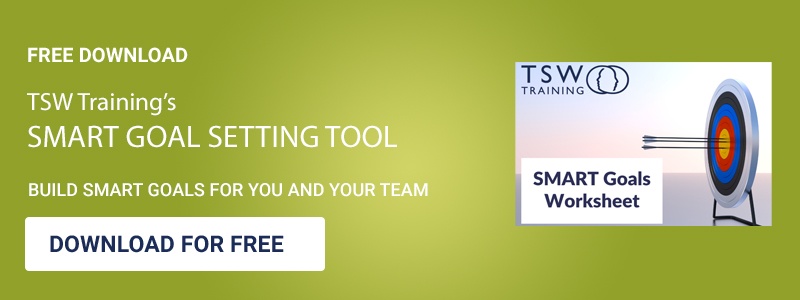Every employee should have a personal development plan (PDP). Managers can use PDPs to help employees reflect on their abilities and find opportunities to improve.
⏰Key points
- The PDP gives your employees a self-development purpose through a qualification, new skill or working towards a promotion
- PDPs raise morale and inject expertise
- There are 10 techniques managers can use to make sure their employees meet their PDP goals
What is a personal development plan?
It’s an official record of the skills your employee has and the skills they need to develop. It’s a framework to help them reflect on what they want to accomplish and how to go about it.
For employees, it’s a source of discovery, inspiration and motivation.
For managers, PDPs can become the basis of performance appraisals. They inform overall goals and objectives, but they can also become a guide rope that keeps them focused on development.
The PDP gives them purpose and something to work towards, whether it’s a qualification, new skill or a promotion.
Managers are measured by how well employees meet their targets, so keep the PDP at the heart of your motivation strategy.
It encourages your staff to seek out opportunities to learn, study and develop. You can steer them towards appropriate training, but they don’t have to be in a classroom to be enlightened or broaden their skills.
The business benefits of personal development plans
PDPs aren’t an admin chore or a distraction from work. Among many other benefits, they raise morale and inject expertise, which makes your job as a manager, much simpler.
Fulfilling the goals in the PDP doesn’t just mean a personal success for them. Achieving a new skill, or a qualification will help your wider team too:
- Save time and resource: Employees use their new abilities to work independently, freeing up colleagues helping with and sharing their work
- Create a supportive culture: Confidence and trust within the team skyrockets, you’ll see bags of enthusiasm and stronger working relationships
- Promote positive growth: An individual’s achievements inspires the people around them to get learning. Your ranks are filled with motivated workers
- Reduce outsourcing costs: Encourage knowledge sharing to gift the business and team with in-house wisdom
- Improve visibility: Your upskilled employees can offer their expertise to others around the business
- Improve reputation: Your team becomes synonymous with success because they achieve their goals, win awards and industry accolade
- Improve work-life balance: Having outside interests in development is normal and healthy. Giving them something else to focus on with propelling their energy levels at work.
- An investment in PDPs makes a successful manager: Your people grow and achieve their goals, who wouldn’t want to work for you?
How to write a personal development plan
Your HR department will subscribe to a method of delivering PDPs, so they’re your first port of call for guidance, but you’re more than likely to use SMART goals.
-
- Make a list of business objectives. Then, list what the employee wants to achieve. Look for crossovers.
- Assign specific, measurable, achievable, relevant and time-bound benchmarks to each goal. Help your employee to understand what they’re aiming to achieve and how to achieve it
- Put the goals in priority order
- Acknowledge the barriers and explore what could get in their way.
- Highlight the opportunities to learn
How to support your employee’s personal development plan
#1 Research qualifications and courses
Team leaders and managers can spot a skills gap from a mile off. To patch the gap, you need to train key people in your team.
Choose the employee who’ll be the torchbearer for your cause and introduce them to the idea of upskilling through a course or qualification.
You need to set expectations. Some qualifications require 100 plus study hours, where coursework and exams are mandatory. Your employee needs to go all-in to succeed.
Show them what’s in it for them. Lead with the learning outcomes and benefits, rather than setting up barriers or selling in what it’ll do for your bottom line.
Training PDP template:
By the end of this quarter you need to:
- Learn about the qualification
- Find a training provider
- Source funding
- Submit to HR for approval and ask them to book your space
What problems could you encounter?
- HR rejects the course
- The course is oversubscribed
- Overwhelmed by studying and working
How will you improve your chances of meeting your goal?
- I’ll supply similar courses to HR so they can choose the most appropriate one
- Ring fence my time so I can purely focus on my studies
#2 Find them a mentor or a coach
Even SMART goals can be challenging to translate into the real world.
Your employee needs to see how it’s done. Partnering them with a mentor or a coach brings their goals to life. A mentor won’t train them or serve as a consultant, but they will buoy their confidence and work on their goal-smashing qualities.
You need to set expectations with your employee. This person is them, five, 10, 20 years from now. It’s a person who embodies the goal in the PDP, who they can look up to for advice.
Who should be your employee’s mentor?
- It’s safer to connect your employee with someone you know and trust, so trawl your current connections and relationships first
- They don’t have to be working at your company, or even be in the same field
- You’re familiar with their mindset and know they’re a good match for your employee
- They’re looking for someone to mentor
Likewise, your employee needs to be willing for the relationship to work. Float the idea with them before finding a mentor.
#3 Work shadowing
Job shadowing, or work shadowing, drops your employee into a real working situation, so they can observe how to do something and learn from it. They can get to grips with proven processes and mechanisms and transfer what they learn into their role.
You’ll need to help set up the shadowing opportunity:
Although the job shadow placement will share your employee’s goal, the actual work might be very different. That’s fine. For example, a product manager at an insurance company will fulfil their role very differently to a product manager at a fast-fashion brand, but they could both learn a lot from one another.
When you’re employee shadows, encourage them to:
- Closely observe how the individuals and teams work towards their goal
- Request an introduction to the goal prior to the observation and a de-brief at the end
- Get involved. We learn most by doing, so ask them to volunteer to complete a mini-task and get hands-on to help their learning to transfer
#4 Set practice tasks
Thanks to SMART, you can map out every stage of the goal. You can see the potholes and prepare your employee for them.
A mini-challenge, or practice task, will support them through the more testing or demanding aspects of the goal.
For example, the target is to ‘make 200 more sales over the phone’. An obstacle is ‘demotivation and overcoming rejection’. Patch the pothole with preparation:
- Prepare ‘no’ responses
- Work on emotional distancing
To fulfil these mini-challenges, they could shadow another team member, read and research online, watch videos, listen to podcasts or do a short-course.
#5 Buddy up
If there’s another employee on your team with a very similar PDP goal, suggest they work together.
It will give them the chance to talk about frustrations and obstructions, steps forward and wins in an unofficial forum.
The employees you buddy up need to have a good working relationship. In other words, they realise this is an opportunity to support, not compete.
#6 Host knowledge-sharing meetings
Set up team meetings that exclusively talk about learning.
With so many people focusing on refining their skills, shadowing, being mentored and training, there’s a lot of knowledge to share around.
Ask one or two employees to host each meeting and talk about:
- What goal they’re trying to achieve
- What they’ve learnt so far
- Interesting twists and turns in the road
- The results so far
Encourage them to welcome questions at the end.
It’s not a lecture, but an opportunity for everyone to learn and improve. Knowledge sharing will help you to improve your workplace culture.
#7 Be personal
A friendly voice can turn a bad day into a good one. Just keep an eye on your employee. Do they seem distracted? Demotivated? Upset? Be a nice person and talk to them:
- Ask them how they are
- Give them your full attention
- Use active listening – think about the context of what they’re saying
- Empathise
- Share insights that will help them
If you can help to reframe whatever they’re going through, you’ll lift their spirits and energy for the challenge at hand.
If you think your conversation was surface level and lacked meaning, just make a note. If things aren’t going their way, they might not want to reveal too much in a casual chat. Everyone has bad days, but it’s your job to find out if a failure to meet the goals in the PDP are the cause.
Empathy takes rehearsal, especially between managers and employees, so be patient.
#8 Monitor their progress
The best way to monitor PDP goals is to meet regularly. Once a week, ideally, face-to-face, with no distractions. Have their PDP to hand and run through it together:
- New developments
- Achievements and learnings
- What’s going wrong and why?
- Fixes and solutions
- What are you planning to do this week
- How can I support you?
This isn’t an opportunity to micromanage. You’re helping them get from point A to point B by listening and offering support.
#9 Support them when they fail
When your employees fail to meet the goals in their PDP, you need to act quickly to protect them from self-doubt and salvage their morale and motivation.
Although PDPs are focused on personal development (and for some, it could be a less critical failure than a missed objective or key result), you should still strap in for a difficult conversation.
You’re questioning why they are meeting their goals and they could be angry and embarrassed, perhaps even irreverent. You need to respond with empathy and pragmatism, leading by example.
- Ask them what happened and why they aren’t meeting their goals: Listen to the facts. Listen for context. They might try to blame you, but don’t interrupt
- Relay to them what you interpret the issue to be: This approach makes them feel heard and valued, despite the failure
- Tell them what you think the solution is: Make a plan of action they can work on immediately to make things right
- Accept that the failure may be on your shoulders too: The goal may not have been achievable, or they may not have had the right support. Ask probing questions to get to the root cause of the failure
#10 Set new goals
If they complete their goals, set new ones! This employee is levelling up and you need to push them to reach their full potential.








